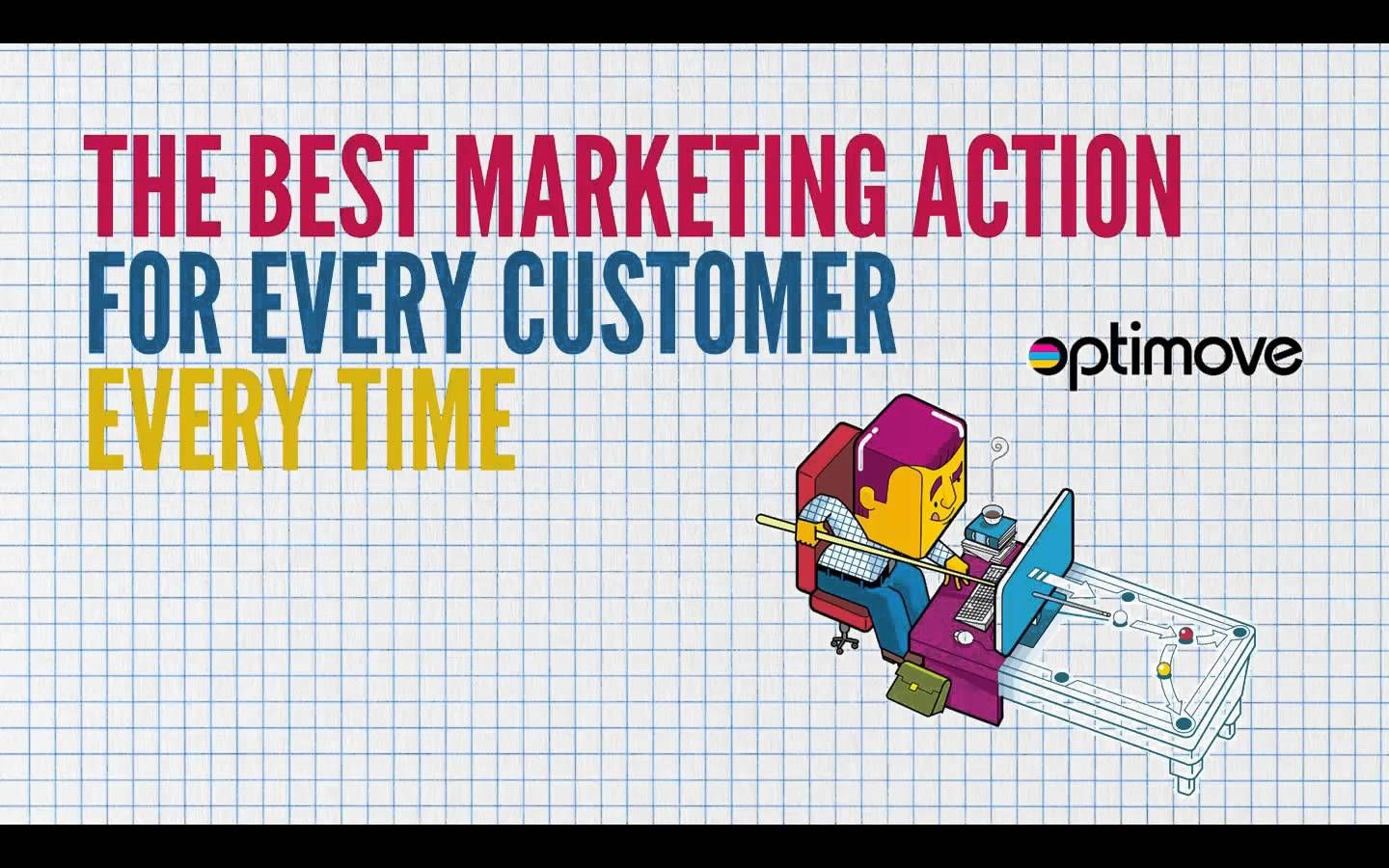YouTube. Facebook. Snapchat. Vine. Meerkat. Periscope. Twitch. Has your brand mastered them all Get the insights and knowledge you need to succeed at [a]list Video Summit Aug. 19. Get tix: http://alist.ly/1EVLyyz
A new case study with LuckyFish games, the developer of various social and mobile casino games, recently broke down how utilizing the retention automation platform Optimove helped its customer marketing operation, with a mission to increase conversion rates, as well as player payments and player future value.
This is isn’t Optimove’s first go-around with mobile, as it’s worked with Zynga, 888 and other studios to assist in delivering targeted, real-time customer marketing campaigns designed to increase engagement, retention and monetization. With the case study, it shows just how effective personalized player marketing can be for the gaming industry as a whole.
To get a better idea of how it works, [a]listdaily caught up with Optimove CEO Pini Yakuel, including what it does in general, as well as conversion rates and customer retention.
So tell us about Optimove. How will this benefit consumers in the long run?
When brands can communicate with each individual customer in the context of their particular preferences, wants and needs, the customer experience is tremendously improved. We call this communicating with “emotional intelligence.” Doing this successfully leads directly to increased brand satisfaction and loyalty. Not only is this terrific for customers, it’s also a big win for brands, especially in this era of intense online competition and consumer marketing overload. That’s exactly what Optimove does. We enable companies to communicate with customers on a one-to-one basis so that they can maximize customer spend, engagement, loyalty, retention and lifetime value.
We see that Optimove has partnered with many game companies, including Zynga and Caesar’s Entertainment. What’s the key ingredient in making such a partnership work?
The main ingredient is that Optimove provides a unique product which effectively addresses a critical need for online companies. While every company understands the importance of customer acquisition marketing, customer retention marketing is actually far more important to the financial health of companies. Once online companies “get” the importance of investing in personalized and proactive customer retention marketing — and see the growth and performance benefits — they never look back. In a world where players are evolving, and competition is fierce, rising above the noise by engaging players in ways they appreciate is a must in order to grow a business. Optimove’s solution intelligently automates the execution of this specific goal, something that our customers and partners appreciate greatly.
What is the biggest element that can define a popular social/mobile casino game? The draw of money The addiction of play?
More than anything, it’s the overall user experience. What defines a good game is whether players return to play again and again. There are two primary factors in a great player experience: the game itself (visual/audio design, playability, appropriate difficulty/challenge, etc.) and the brand experience that surrounds the game environment. Great personalized incentives and challenges, social interaction benefits and brand-player communications that exhibit emotional intelligence are the environmental factors that lead to repeat play and word-of-mouth viral effects.
Tell us about personalized player marketing, and how it caters to players in the long run.
On a strategic level, effective analysis of granular player data allows marketers to better understand the various personas represented by their players’ behavior, preferences and tendencies. On a tactical level, the successful analysis of player data allows the marketer to personalize offers and incentives to maximize their relevance to each individual player. Not only does this help maximize player engagement and spend (and reduce churn), it generates goodwill, enhanced brand perception and word-of-mouth promotion.
Most consumers have become intolerant to the bombardment of mass marketing coming from every website, store or app with which they have interacted. Instead of encouraging engagement and improving brand perception, generic marketing to large swatches of one’s player base leads to brand fatigue at best, and outright negativity at worst.
Modern consumers expect that the brands with which they have interacted will try to engage them via follow-up marketing communications. This means that savvy marketers, namely those who discover how to send highly-relevant offers to the right player at the right time, will enjoy all the revenue and brand perception benefits mentioned above, as well as a hefty advantage against competitors.
The future is already here: only brands that are able to interact with their players in the context of their affinities and preferences will succeed. Players expect their favorite gaming brands to understand what they want and need, and it is the marketer’s job to proactively provide those offers to the right players at the right time in the right way. When done correctly, brand-player interactions become more frequent, the brand-consumer relationship deepens and brand loyalty increases. Those marketers who fail this challenge will foster negative brand equity, lose players to the competition and will over-pay for new player acquisition. Gaming brands must learn to effectively personalize — or they will vaporize!

Per your case study, were there any startling results that you feel could be applied for future improvements to Optimize?
LuckyFish is a terrific customer for us, because they really “get” the need for personalized player communications and appreciate the breadth and depth of Optimove’s solution for managing, automating and optimizing the process. It is very gratifying for us to see a customer use our system to achieve the kinds of metric improvements that LuckyFish has seen. In terms of improving Optimove for the future, this is something we are constantly focused on and doing! One area of improvement is expanding our real-time facilities, namely to allow marketers to act on customer behavior immediately via a wide range of channels. Another is adding new and interesting channels. An example of the latter is our support for Facebook Custom Audiences. Before Optimove, companies were using Facebook for acquisition marketing, but not for retention marketing, because of the difficulties involved. We built our Facebook integration on top of our existing customer segmentation, personalized marketing and campaign automation engines, allowing companies like LuckyFish to use Facebook as an extremely effective personalized retention marketing channel. By allowing marketers to use all available customer communication channels in a coordinated way, Optimove allows true multi-channel retention marketing.
Conversion rates appear to be the highest according to your case study, but player payments and player future aren’t far behind. How do you feel these all come together to create a successful mobile experience?
At the end of the day, communicating with players in a personalized fashion, in the context of how they have interacted with the game, and based on a deep understanding of their wants, needs and affinities, will improve every player metric throughout the player lifecycle: it will increase conversions while the player is newly registered, it will increase player activity and payments while the player is active, and it will reduce churn over time. Together, all of these factors dramatically increase the value of nearly every player, delivering huge benefits to the game publisher. For this reason, it is now well understood that investing in one’s existing player base is where the brand’s highest potential growth engine is found.
Do you think social/casino games will improve with future releases What would you like to see new releases provide to consumers?
The future of games is going to be around personalizing and contextualizing both the game experience itself and the publisher-player communications that surround the game. In the not-too-distant future, every player will have an individual in-game experience, customized to his/her wants and preferences, as well as a unique relationship with the brand. As we like to say: in the near future, brands will either personalize or vaporize.
How are player personas defined?
Optimize’s technology determines player personas using a combination of lifecycle stages (e.g., registered, new, active, churn, back from churn), activity history (e.g., game preferences, platform preferences, responses to prior campaigns, acquisition channel), behavioral attributes (e.g., play frequency, payment patterns, win/loss ratios) and demographic attributes (e.g., geographic location, age, gender). All told, hundreds of factors are analyzed for each player on an ongoing basis. While behind the scenes the Optimove software employs advanced customer modeling, multi-dimensional clustering algorithms and predictive analytics, the software’s user interface makes it child’s play for marketers to leverage the resulting player personas for managing, automating and optimizing personalized player communications. It is important to note that because many of the above factors change frequently, it is critical for the persona-segmentation to be dynamic and continuous: players change quickly, so marketers need to adapt quickly and ensure that every player is receiving the most relevant offers, incentives and messages for their specific situation.
From tracking these player personas, what insights are you able to garner? Are there any generalizations you have been able to draw from mobile game players?
Many marketers using Optimove track dozens or hundreds of distinct personas, each with its individual characteristics. Because the personas are generated directly from the player database, the various personas are quite different from one game publisher to another. Of course, there are similarities which can be leveraged to quickly determine the ideal communications for each (we’ve developed best practices for numerous persona categories, such as New, VIP, Risk-of-Churn and Back-from-Churn), but the measurement and optimization cycle that the software encourages marketers to follow is actually the only way to know, based on the data, that the person-based marketing is as effective as it can be. In other words, there aren’t any rules of thumb when it comes to player communications — the publisher needs to leverage its data, and to systematically adjust the per-persona communications until the winning formulas are found.
How does this translate to increasing player value? Can you tell us more about that?
At the end of the day, communicating with players in a personalized fashion, in the context of how they have interacted with the game, and based on a deep understanding of their wants, needs and affinities, will improve every player metric throughout the player lifecycle: it will increase conversions while the player is newly registered, it will increase player activity and payments while the player is active, and it will reduce churn over time. Together, all of these factors dramatically increase the value of nearly every player, delivering huge benefits to the game publisher. For this reason, it is now well understood that investing in one’s existing player base is where the brand’s highest potential growth engine is found.

